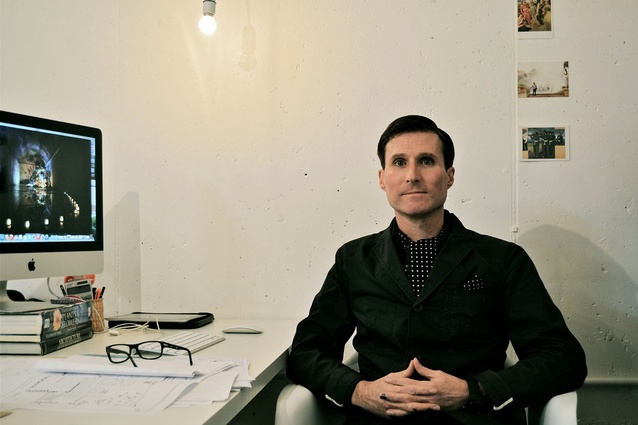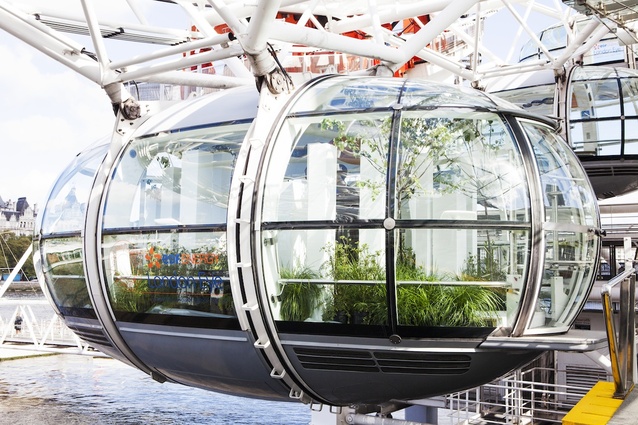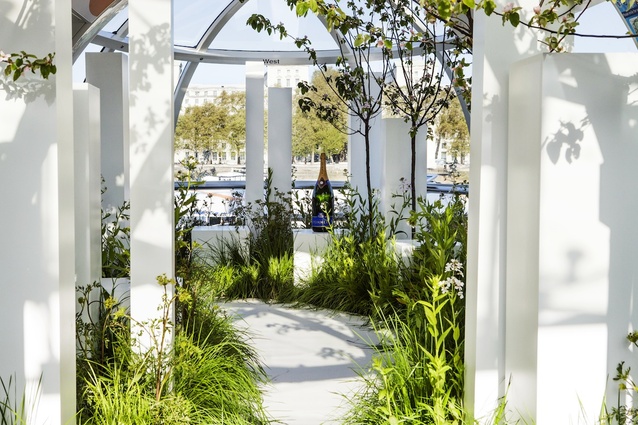Designer profile: Darryl Moore
Garden designer and Kiwi expat Darryl Moore is co-founder of London urban garden design festival, Cityscapes. The festival, launched in 2012 by Moore and business partner Adolfo Harrison, aims to change the way urban parks and gardens are designed through the creation of installations in collaboration with designers, artists and cultural organisations.
This year’s festival ran from June to October. We caught up with Moore in his Kingsland Road, London, studio about the festival and his career to date.
ArchitectureNow: How did you get into garden design?
Darryl Moore: When I was in New Zealand I was a draftsman, so the drawing side of things was something I knew how to do. When I came to London I studied art history and philosophy and then I worked in the music industry. While I was working as a sound artist, I did a lot with environmental sounds. I was interested in the way space shaped sound – the way you perceive sound according to the space you’re in – then I became interested in hieroglyphic shaped spaces then I became interested in how to shape spaces.
ArchitectureNow: How did Cityscapes come to be?
DM: My business partner and I came up with different ideas for urban garden projects to combine art and design using odd of pieces of land within central London and we thought of doing this within a festival context.
London is such a melting pot of creative industries. We thought garden design should be sitting alongside everything else. We wanted to show the public how creative it can be so we partnered up with The South Bank and Bankside Cultural Quarter, which is an organisation that oversees all the big museums in the Southbank area. We spoke to a number of different venues and organisations and they were all keen to do something with us and collaborate on garden projects.
ArchitectureNow: Tell us about some projects involved in this year’s festival.
DM: At the beginning of the year we created an installation called Design Debate Station for the Royal Horticultural Society at the Plant and Design Show. It featured a greenhouse with four questions about garden design and we invited visitors to write their response to them on the panes of glass.
We have been working with Siobhan Davies Dance (SDD), a leading contemporary dance and arts organisation. One project involves an installation, designed by Daniel Lobb, which features a suspended landscape in a studio atrium utilising a water cycle to sustain plant life, exploring the novel creative possibilities of growing plants indoors.
The other project with SDD is designed by Anoushka Feiler and is at a temporary site called The Paperworks in the suburb of Elephant and Castle, managed by local arts organisation Corsica Studios. The design has been a site-specific response to the industrial site, and has been developed for a dance performance by local young people working with a choreographer, Charlotte Spencer.
We also created a large installation called FlowerFall in the atrium of the Investec building in the City of London in support of the National Garden Scheme, featuring 1000 suspended artificial flowers.
We have just started construction on a large-scale permanent pocket park at Greenwood Theatre in London Bridge. It was designed by garden designer and television presenter Joe Swift and fashion Designer Zandra Rhodes, and is due for completion at the end of October. It is a bright and colourful transformation of a rather dull building in a grey hard landscaped area.
ArchitectureNow: What about some of Cityscapes’ past projects?
DM: In 2012, we launched three projects: The Majesty, which was an installation in a Victorian tunnel below Waterloo Station, Gibbon’s Rent, which is a permanent community space, and The Pommery EyeGarden – a garden within a capsule of the London Eye. For this, Andy Sturgeon designed the installation, sponsored by Pommery Champagne, which was phenomenal. It was an overnight build. It was there for 24 hours so we had to go in after the eye closed for the night and we built it until 3am. During the next day we invited guests to ride in it.
ArchitectureNow: What’s coming up for Cityscapes in the next couple of years?
DM: We are working on a couple of interesting projects with The RHS, which will run across the summer and are currently in the development stage. We are also doing three ongoing projects in Stratford Cultural Quarter near the Olympic Park with local arts organisations, which will begin to materialise next year.
ArchitectureNow: What’s the best thing about what you do?
DM: There are a lot of good things about my job: coming up with and initiating the projects with the cultural organisations, getting the designers on board, developing those designs and getting the projects built. It’s a great thing. We’re working with a group called Putting Down Roots, which is a horticultural education initiative run by homeless charity St Mungo’s. The charity teaches homeless people the horticultural skills they need to get jobs in the industry. It’s something that’s central to our work. We try to integrate the community into our projects as much as we can.

















